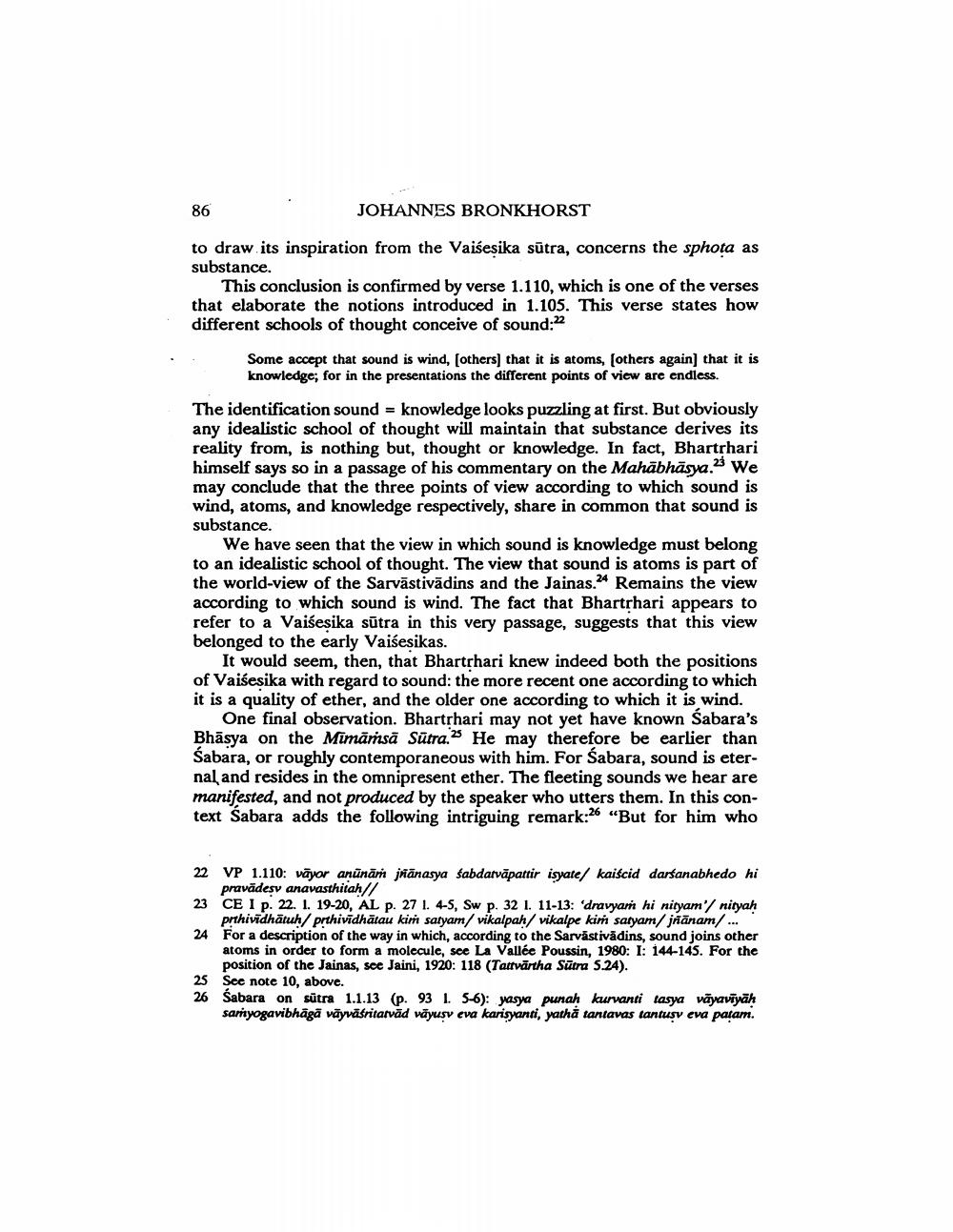________________
86
JOHANNES BRONKHORST
to draw its inspiration from the Vaiśesika sūtra, concerns the sphota as substance.
This conclusion is confirmed by verse 1.110, which is one of the verses that elaborate the notions introduced in 1.105. This verse states how different schools of thought conceive of sound:22
Some accept that sound is wind, (others) that it is atoms, (others again) that it is knowledge, for in the presentations the different points of view are endless.
The identification sound = knowledge looks puzzling at first. But obviously any idealistic school of thought will maintain that substance derives its reality from, is nothing but, thought or knowledge. In fact, Bharthari himself says so in a passage of his commentary on the Mahābhāsya. We may conclude that the three points of view according to which sound is wind, atoms, and knowledge respectively, share in common that sound is substance.
We have seen that the view in which sound is knowledge must belong to an idealistic school of thought. The view that sound is atoms is part of the world-view of the Sarvāstivādins and the Jainas.24 Remains the view according to which sound is wind. The fact that Bhartrhari appears to refer to a Vaišesika sūtra in this very passage, suggests that this view belonged to the early Vaibesikas.
It would seem, then, that Bhartrhari knew indeed both the positions of Vaisesika with regard to sound: the more recent one according to which it is a quality of ether, and the older one according to which it is wind.
One final observation. Bhartrhari may not yet have known Sabara's Bhāsya on the Mimāṁsā Sūtra. He may therefore be earlier than Sabara, or roughly contemporaneous with him. For Sabara, sound is eternal and resides in the omnipresent ether. The fleeting sounds we hear are manifested, and not produced by the speaker who utters them. In this context Sabara adds the following intriguing remark:26 "But for him who
22
VP 1.110: vājor anūnā irānasya sabdatvāpattir isyate/ kaiścid darśanabhedo hi pravādesv anavasthitah// CE I P. 22. I. 19-20, AL p. 27 1. 4-5, Sw p. 32 1. 11-13: 'dravyan hi nityam'/ nityah prthividhātuh/ prthivīdhātau kim satyam/ vikalpah/ vikalpe kiṁ satyam/jñānam/... For a description of the way in which, according to the Sarvāstivādins, sound joins other atoms in order to form a molecule, see La Vallée Poussin, 1980: I: 144-145. For the position of the Jainas, see Jaini, 1920: 118 (Tattvārtha Sūtra 5.24). See note 10, above. Sabara on sutra 1.1.13 (p. 93 1. 5-6): yasya punah kurvanti tasya vāyaviyāh sarnyogavibhāgā vāyväsritatvād vāyusv eva karisyanti, yatha tantavas tantus eva param.
26




